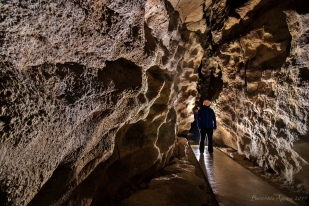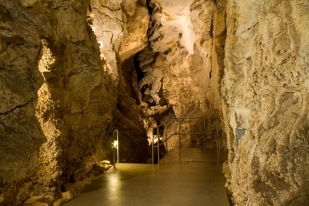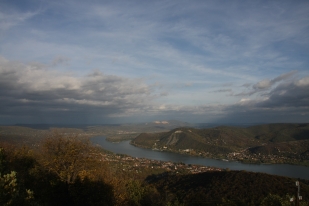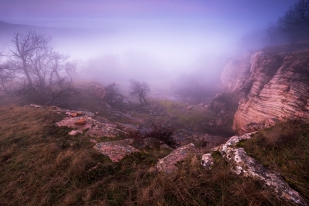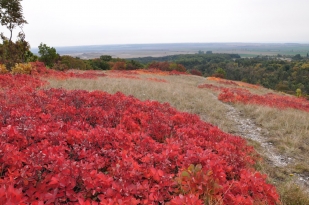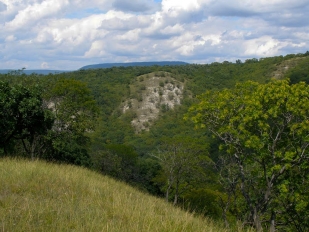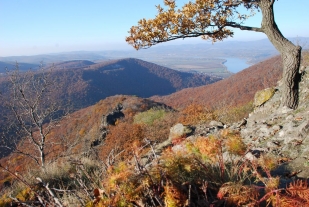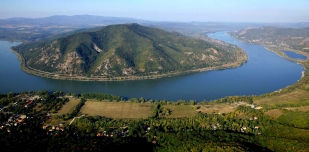-
Pál-völgyi Cave
The Pál-völgyi Cave in Budapest was discovered in 1904 and it is accessible for the public since 1919. The Cave is famous for its unique dripstones, the narrow corridors and the large level differences are also very typical. The 500-metre long route has lately been modernized and adjusted for the highest requirements. It takes the visitor to the most astonishing stone formations, drip stones, glittering calcium-crystals and prints of primeval shells. At some parts the perfect acoustics of the halls can also be experienced.
More -
Szemlő-hegyi Cave
Visiting the Szemlő-hegyi Cave is ideal for school and preschool groups, families and tourists as well because a real fairy-tale world is waiting for them here.
More -
Duna-Ipoly National Park Directorate
The Danube-Ipoly National Park was founded on 28 November 1997. The present operation area of the Directorate covers Pest, Fejér, and Komárom-Esztergom County.
More -
Protected Landscape Area of Gerecse
The closing section of the Transdanubia Mountains to the north-east are the Dunazug mountains. This range includes the mountain Gerecse, enclosed to the north by the river Danube, to the east by the basin of Zsámbék, to the south-west the basin of Tata, while to the west, the territory of Kisalföld (the “small flatlands”).
More -
Protected Landscape Area of Vértes
The Vértes is the middle section of the Transdanubia Mountains, situated between the ranges of Bakony and Gerecse. Its average height is 350 meters with no more than about 480 m peak altitudes. Still, when viewed from the surrounding flatland, the Vértes impresses the spectator as a much higher mountain, owing mainly to the sharp cleft of its edges. In the Middle Ages, the Vértes was from all sides surrounded by deeply set swampy pastures. As a result of continuous draining efforts, the marshland of the past is hardly traceable today. Some remains of what used to be swampy meadows are to be found at the skirts of the Vértes: the grassland of Csíkvarsa.
More -
Protected Landscape Area of Buda
Covering 10,528 hectares of mountainous landscape, the Buda Landscape-protection Area surrounds Budapest from the north-west, and at many points it deeply stretches into the city. The main objectives of the protection is to preserve the unique botanical, zoological and geological values of these wooded mountains and to keep the complex landscape of forests and open areas intact by preventing any constructions in the area. Our goal is to maintain this green belt in the vicinity of Budapest, which functions as the lung of the capital.
More -
Pilis Biosphere Reserve
The Pilis Biosphere Reserve is a regional cooperation of Pilis State Forestry (Pilisi Parkerdő Zrt.), the Danube-Ipoly National Park Directorate, the local governments and NGO-s of the area in order to protect the natural values, support the development of local economy and education. As Ecotourism is one of the strengths of the site, related developments are beneficial for every participant.
More -
Buda Castle Cave
Participants of our walking tours in the Buda Castle Cave can catch a glimpse of a 3,3 km long cave system hiding underneath the streets of the Castle District and discover the history and the unique geology of the Buda Castle Hill.
More -
Danube–Ipoly National Park
The area of the Danube-Ipoly National Park includes the Pilis, Visegrád and Börzsöny mountain ranges, the section of the Ipoly Valley between Hont and Balassagyarmat and parts of Szentendre Island. The unique characteristic of the National Park area is the meeting of the three major landscape units, the river valleys, the mountains and the plains. Hence the great diversity of the area, which is unique within our borders.
More -
The Pilis
Known as the Danube Bend, the mountains on the right bank of our European-famous landscape have been known for centuries as the Pilis. However, they have very different geological histories, which is why they should be split into two: the Pilis in the south and the Visegrád Mountains to the north.
More
